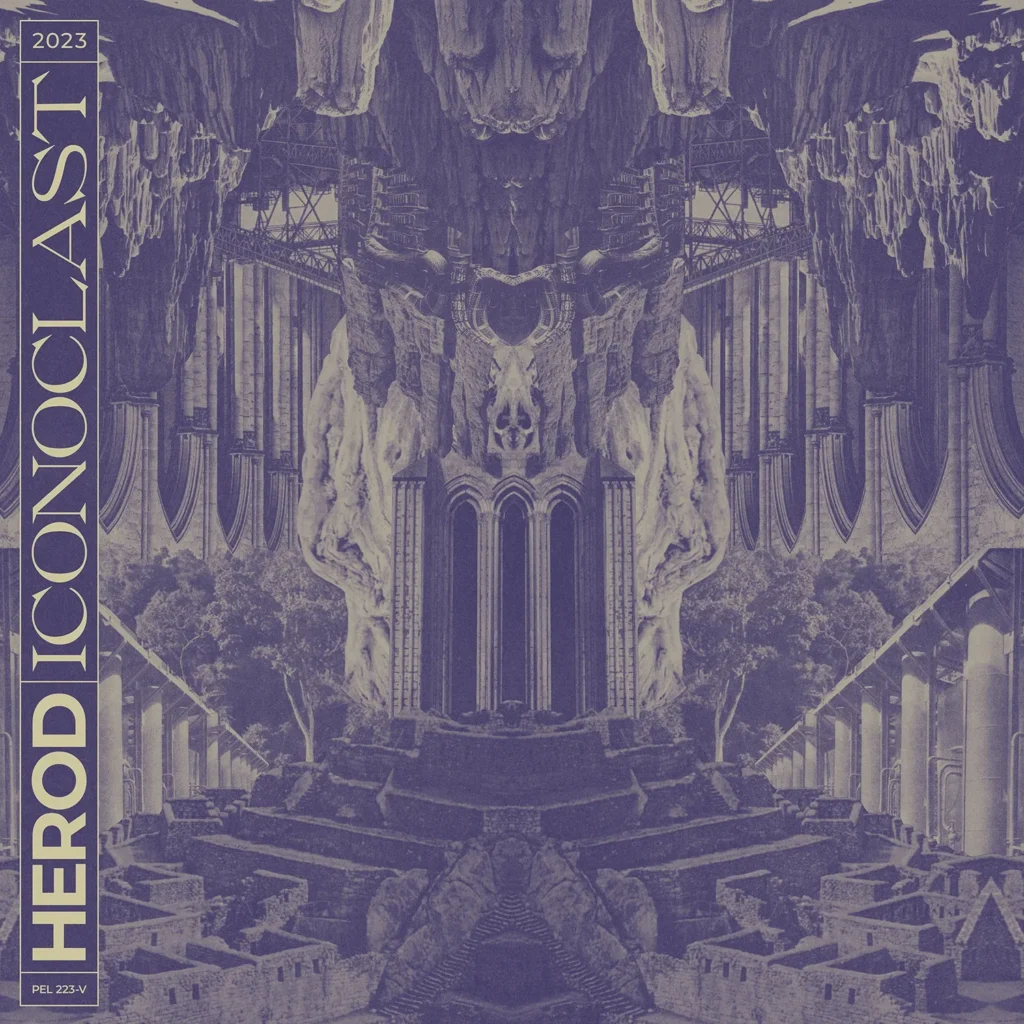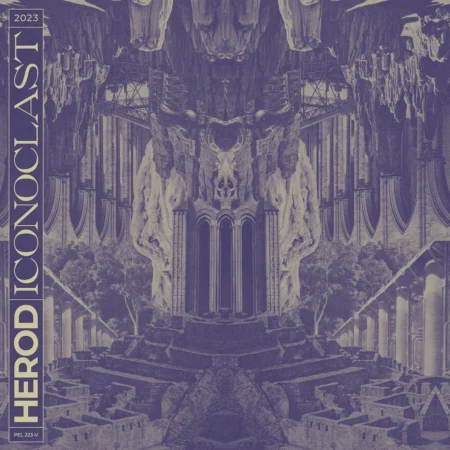With their new album, The Iconoclast, Swiss act HEROD are not here to preach about the deconstruction of this world. Its icons, oracles, and leaders. They are here to carry it through. Assume positions.
“Every destructive act is in itself a creative act of transformation. Recreating something new out of broken elements”. These are the words of HEROD‘s guitarist Pierre Carroz, and we couldn’t agree more in a world which is long now boiling with rage and discontent. A world where it’s a matter of time before its transformative forces can no longer be suppressed.
The Iconoclast’s genius lies in the circular mirroring of the many faces of heaviness.
HEROD’s new album is surely a step forward since their last release, but it claims no less its rights to socio-political criticism and ravaging force. It is equally punishing and vulnerable, equally dense and bleak.
The album cover adds yet another layer to the general impression, exhibiting a dystopian image of a world which craves to be stripped of all the decay it’s been burdened with. An image of a world where the natural collides with the manufactured. A world where superfluity has been enthroned like undying evil in palaces which are now in ruins.

HEROD picked a cover for The Iconoclast which adds another layer to the album
The album opens with The Icon, which explodes with the hardcore attitude of acts like Lamb of God and Hatebreed. Its brisk pace, the swarming guitars and the multiple layers of drones create immediately a world which is asphyxiating. And this buzzing mass of textures walks throughout the album solidly. The interjection of clean vocals somewhere four and a half minutes in add a very nice melodic dynamic, and the song builds to a climax with the persisting guitars in the background.
The girl with a balloon and The Edifice draw you in completely. The girl with a balloon is somehow stripped down to a simplicity which highlights its beauty and proves that heaviness can indeed be simple.
With The Girl With A Balloon and The Edifice, HEROD draw you in the world they crafted with The Iconoclast
Gojira have triumphantly manifested that after all and HEROD seem to trust them. After the opening clean riff paints a desolate landscape, the thick, crunchy one-note riff builds a wall of sound that sweeps everything like a blast wave.
Featuring Matt McGachy of technical death metal masters Cryptopsy, The Edifice is more sluggish. Does the opening chant remind of Alice in chains vocal arrangements? Yes, it does. The chant sounds like devilish caricature figures rising around you. The Iconoclast is not abrasive because it’s ferocious in speed, but more because it’s claustrophobic and ominous.
HEROD’s new album is ferocious in speed, claustrophobic and ominous
The ode to… includes a collaboration with four members of Les Mysterès des Voix Bulgares choir and is an apt example of The Iconoclast’s kind of genius: The circular mirroring of the many faces of heaviness. This track got me good.
The first time I heard it, it sounded a bit off. I was blown away when the second time I played it, it had completely transformed to the heaviest thing ever. As the guitars and percussion become more and more dense, and the polyphonic vocals carry on, the song gains a heaviness of epic proportions.
With The ode to…, HEROD offer us a heavy song of epic proportions
The banger track The Becoming is barraging, more tight in terms of riffs and consistency and more zestful. It is probably the most straightforward track in the album. After The Becoming speeds things up, the instrumental The Intergloom slows down the pace again, introducing the album into a mesmerizing hovering along breathtaking highs and lows. It levitates the point of view so that we can kind of gain a wider perspective of the landscape the album dwells in.
The warped note of the next track The Obsolete feels like a vibrating nerve, and along with the fuzzy guitars and the thunderous downstrokes, adds yet another damp, muddy brushstroke on the canvas. A brushstroke which melts down to the bittersweet final track The Prophecy, where former and current The Ocean vocalists Mike Pilat and Loïc Rosetti build their unique forces into the album, in a collaboration which accelerates and lifts the album completely off the ground.
HEROD’s collaboration with the previous and the current frontmen of The Ocean, Pilate and Rosetti, takes The Iconoclast off the ground
The Iconoclast wins you in unexpected ways and there are zero loose ends here, because every song is a different magic potion. One of the most remarkable achievements of this album is that it has embraced multiple dynamics and perspectives. Ιt is truly inspiring to be witnessing so many releases which build on foundations and add layers of creativity, pushing the boundaries of sounds and formulas.
The Iconoclast is a fine example of that. It captures the restless need of some artists to explore how far they can reach out to cull ideas and fuse them into their palette. Artists like these don’t go for “adequate”, they go for the “transcendental”. And, by doing that, they open up a space which has a much larger scope than the original intention.

